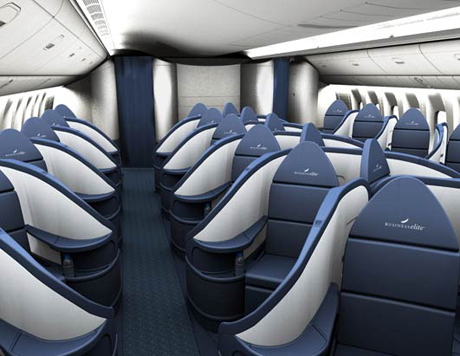
My recent episode with an Australian frequent flyer program (er, a choice of two, and I'm not going to name which one) illustrates the challenges in handling status changes sensitively and thoughtfully. I'm not the most frequent of flyers, but I had through a long and dusty trail garnered silver status, and for the past year had enjoyed the albeit modest benefits this afforded.
However, the great reckoning, the review date, loomed, and it looked as though I was going to miss out, not by much, but I wasn't going to make it. I wondered, would they let me down gently? Would they take into account my near miss, and allow me to hold my status for another year? Anecdotal evidence from friends and colleagues suggested that this behaviour was possible if not probable.
... and then, I thought all my problems had been solved. Out of the blue, I was asked to fly to the US, to collect a loyalty award (of course!) My status was intact - well, as good as - I calculated that there would be a period of only four days when, technically, I fell short of silver status, before I could rightfully claim my retained status. No worries!
Imagine my surprise then, when I received an automated email from my frequent flyer program euphemistically titled "An update to your membership", which stated "We hope you have enjoyed the benefits of Silver membership. We have recently reviewed your flying activity over the past 12 months and you have not quite earned enough Status Credits during your review period to maintain Silver membership. Your membership pack will be with you shortly."
So, with brutal efficiency, I was demoted. Credit to them for detecting that I had "not quite" earned enough credits - well done on trawling their big data to declare that I was officially an unlucky loser.
But what had happened to their discretion, and their insight? Surely they could see that just a few breaths later I was travelling halfway across the globe with them and that this fleeting demotion was a waste of energy? I contacted them and stated as much. Their response was perfunctory and dismissive; a templated robotic reply from "Terry" which showed "he" hadn't even bothered to look into my membership or my booked flights.
I duly flew to the US and returned (with award!) - while I was away, the new vanilla membership pack celebrating my demotion and withdrawal of benefits had arrived. But I duly checked online - yep, according to their computer I was back at Silver! But where was my automatically triggered email, with congratulations? Radio silence. I decided to write back to "Terry". He replied, almost with a hint of resignation, "Yes, we can confirm you have been upgraded to the Silver membership tier. As members automatically receive a new card when they move tiers it may take slightly longer to receive notification when upgraded. A new Silver card has been generated and should arrive for you in the next few weeks."
So, a nonsensical explanation for taking "slightly longer" to be notified of an upgrade. And a new Silver card to arrive "in the next few weeks." Next few weeks?! Why had I been the victim of their ruthless efficiency when knocking me down to no-longer-valued status, and then subject to delays and lack of notification when I regained my status, four days later?
For me, this was a good illustration of what a tricky space status tiers are, in any loyalty program. Status changes are a hassle - they entail issuing of new cards (two quite needless reissues in my case) and importantly the construction of rules and procedures for demoting their members. Surely it's an unsavoury element of any loyalty program when you have to tell members that they're no longer as important to you as they used to be.
I've also observed first hand in the past the challenges of setting status tiers, and what ways to rewards status. It's easier to establish with frequent flyer programs, perhaps harder to set with other programs. The program I was involved in made the mistake of making its silver status too easy to achieve, and was faced with such a groundswell of qualifiers that they couldn't afford to offer them much at all in additional benefits, and couldn't even afford to send them a different card! So much for status!
Final observation is that status tiers are sensitive and emotional for loyalty program members. Some excellent research a few years back from then Monash Uni academic Nathalie-Chantal McCaughey showed definitively that flyers would regularly and consistently make uneconomic decisions about their flying, in order to maintain or gain status. You might expect this more if you were tempted to advantage when your employer was paying for the flight, but McCaughey also showed it held true for personal travel. This stuff is important, and as my own recent experience shows, it shouldn't be handled sloppily!
